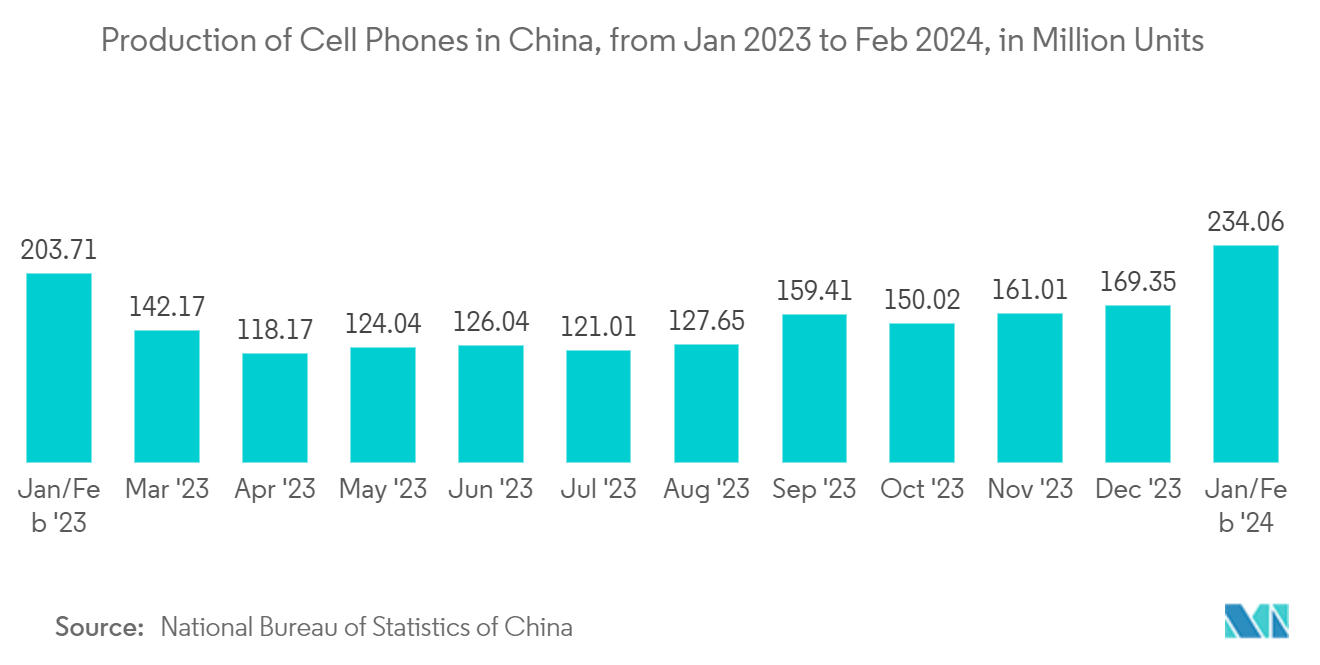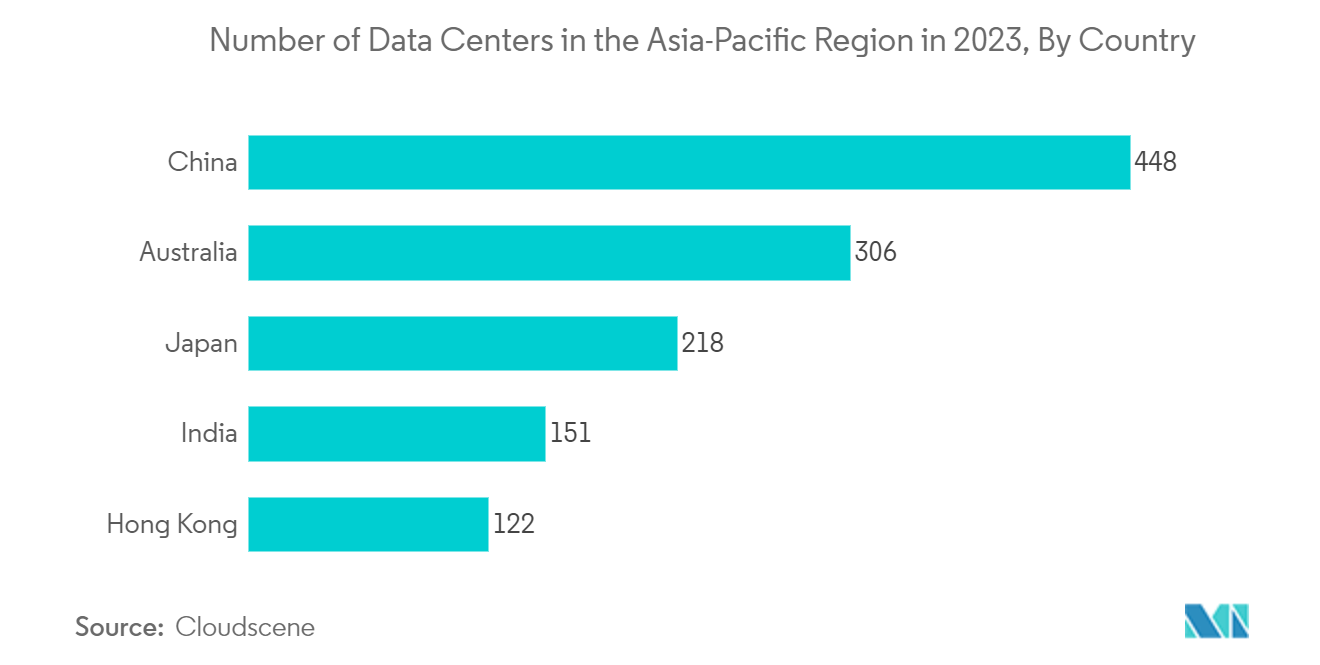Market Trends of Asia Pacific Semiconductor Memory Industry
Increasing Demand for Consumer Electronics Will Drive Market Growth
- The consumer electronics industry is among the critical consumers of semiconductor memory as these components are vital in the charging infrastructure of consumer electronic devices. Hence, they are widely used with smartphones, computers, and several other electronic devices.
- In recent years, the adoption of electronic devices has increased significantly. The growing internet penetration, rising disposable income driving affordability, and the growing awareness of digital technologies are crucial factors behind this growth.
- The increasing penetration of tablets, smartphones, and other handheld computing devices supports the market’s growth. For instance, according to Ericsson, the number of smartphone subscriptions is anticipated to develop at a CAGR of 5%, reaching over 1.14 billion by 2028 in India from 840 million after 2022. Cell phone subscriptions in China stood at 234.06 million units in January and February 2024, increasing from 203.71 million units in January and February 2023. Such trends create a favorable scenario for the growth of the market.
- According to IBEF, India aims to achieve electronics manufacturing worth USD 300 billion in electronics exports of USD 120 billion by FY26. Additionally, in 2022-2023, India produced wearables such as earphones and smartwatches worth USD 970.31 million.
- Smart cities and smart homes are among the latest trends in consumer electronics. As these trends govern a higher adoption of connectivity technology in consumer appliances, household appliance manufacturers increasingly focus on integrating IoT technologies with products to help consumers stay connected with their homes.
- Several leading players are focusing on strategic partnerships and expanding their regional production capacities to fulfill the growing demand. For instance, in March 2023, Winbond and STMicroelectronics announced a strategic alliance to combine high-performance memory with STM32 devices in consumer and smart industrial applications.

China to Hold Significant Market Share
- Technological development in the consumer electronic device industry over the years has facilitated widespread adoption of these devices, which, in turn, is creating a favorable scenario for the market's growth.
- According to China's Ministry of Industry and Information Technology, the country ranks first globally in the production and sales of consumer electronics owing to its improved innovation and brand-building capacity. To continue to remain the major stakeholder in the consumer electronics sector, the government is making several efforts to boost productivity, computing, storage, and display industrial supply chains, along with integrating and innovating the development of new technologies in key industries.
- Another driving force is the growth of autonomous vehicles in this region. The Chinese government has been formulating technology standards and industry guidelines for autonomous vehicles. Beijing became the country's first city to allow open road tests for autonomous cars.
- Several leading players in the country are focusing on supporting the adoption of autonomous cars, thus fueling the market growth. For instance, in October 2023, Xpeng, a Chinese electric vehicle (EV) startup, announced expanding the use of its advanced driver assistance system (ADAS) to 50 mainland cities to maintain an edge over the competitors in smart driving capabilities.
- The increasing demand for data centers also boosts the demand for memory components. For instance, in October 2023, local authorities announced that China's southwestern Province of Guizhou has 39 significant data centers in operation or under construction.
- Overall, the rising data centers and automotive sectors are expected to create massive demand for the market, and the demand from the consumer electronics sector is expected to be constant during the forecast period.


